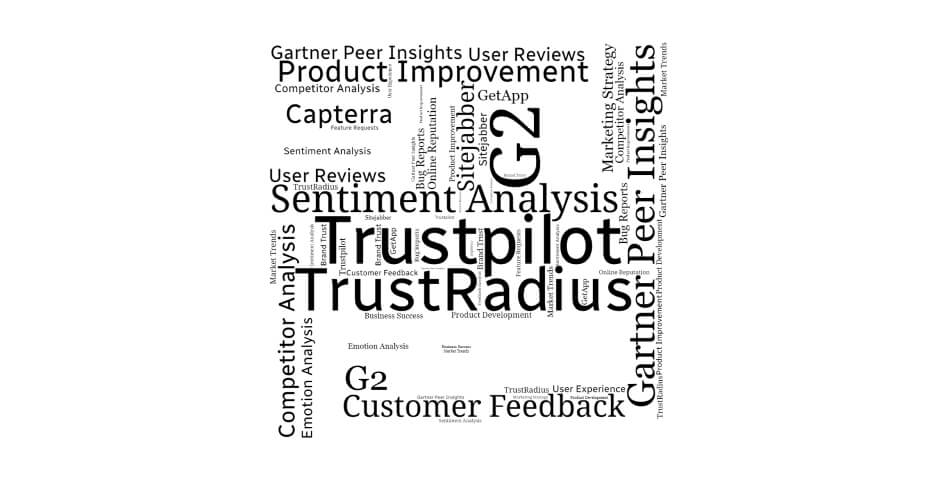Decoding Feelings: The Revolutionary Impact of Emotion Recognition Technology
- Emma Bennett
- 11 Jul, 2024

For companies looking to improve their levels of customer satisfaction and loyalty, insights on how customers feel are essential in today’s digital world. Through the use of advanced technologies, the recognition of emotions can be empowered to give insight into the emotional states of the customers, creating windows that will allow companies to design their services and products more appropriately. In this blog, we discuss the importance of emotion recognition and how it is applied over social media platforms such as Twitter, Instagram, and Facebook, including how Generative AI revolutionizes it. Emotion analysis is changing the face of customer interaction and bettering business strategies.
The Importance of Emotion Recognition
Emotion recognition refers to identifying and interpreting human emotions across various input dimensions such as text, speech, facial expressions, and physiological signals. This is particularly convenient for technology with business purposes, for the reason that understanding the emotions of customers could make the interface a lot more personalized and better in terms of customer service, not to mention loyalty.
Enhancing Customer Experience
One of the main benefits of emotion recognition is improving customer experience. Through the analysis of the emotional response of customers, businesses can tailor their interactions and offers more fittingly. For example, the recognition of customer frustration can trigger immediate resolution of issues, thus minimizing bad experiences and probable churn.
Improved Marketing Strategies
Emotion analytics reveal how customers feel about products, services, and marketing campaigns. It allows marketers to develop messages that would resonate better with the target audience. Emotion data can show what things within a campaign drive positively and what do not, enabling one to be more on target in the marketing approach.
Driving Product Development
Product development can also benefit from emotion recognition. Emotion analysis will allow businesses to investigate pain points and touchpoints in customer feedback. Emotional insight helps prioritize features and enhancements that will bring out the most positive effect.
Emotion Analysis on Social Media Platforms
Platforms are treasure troves of customer emotion and opinion. Emotion analysis on Twitter, Instagram, Facebook, and others has now made it possible for businesses to garner real-time insights on public sentiment or experiences.
Emotion Analysis Using Twitter
Twitter is ideal for emotion analysis because it is a real-time and large-user platform. Users often tweet their instant reactions and feelings towards different topics, hence offering a perfect dataset for analysis.
Key Applications
- Trend Monitoring: A business can manage public perception based on the study of emotions expressed in tweets on trending topics. Based on that information, they can act accordingly.
- Customer Service: Emotion recognition can identify frustration or dissatisfaction in tweets, and the organization can interfere in time to offer the necessary customer support.
- Campaign Feedback: Emotion analysis of marketing campaigns using tweets will help know the practical measures and how to strategize the further implementation process.
Emotion Analysis from Instagram
Instagram is a platform with more visual content, like sharing photographs, videos, and stories. Emotions through Instagram undergo an analysis of captions, comments, and image video content to understand user sentiment.
Key Applications:
- Visual Sentiment Analysis: Computer vision enables businesses to mine sentiments expressed in images and videos, thus providing deeper insights into the customer’s response.
- Comment Analysis: Analysis of comments in user posts lets businesses gauge public perception and emotional reactions to their content.
- Influencer Marketing: Brands can measure the effect of influencer partnerships or campaigns by analyzing emotions portrayed through their posts and comments by their followers.
Facebook Emotion Analysis
With over one billion users, Facebook provides comprehensive customer feedback through posts, comments, and reactions. Businesses can use Facebook for emotion analysis to gain insight into customer feelings.
Key Applications:
- Post Analysis: The sentiment of the user posts and other shared contents can realize customer opinion and trend.
- Reaction Analysis: This can help businesses understand the emotional impact of content concerning different reactions, such as likes, love, anger, and so on.
- Community Engagement: Emotion recognition within Facebook groups and pages will be helpful in good community management by early tracking of bad sentiments followed by action.
The Revolution of Emotion Recognition with Generative AI
Generative AI is revolutionizing emotion recognition, making it more accurate and more profound. These enable the most influential models available today, like the Generative Adversarial Networks and transformer-based ones like GPT-4.
Improved Accuracy and Precision
Generative AI models may understand human emotion very accurately. It can trace even the subtle emotional indicators in text, speech, or visual content with higher precision because of vast training data.
Real-time Emotion Analysis
Generative AI enables real-time emotion analysis, thereby ensuring businesses can respond immediately to customer emotions. This feature is invaluable in applications, for instance, customer care and social media management, where actions could be taken that have implications in providing or denying useful satisfaction information.
Multimodal Emotion Recognition
Generative AI facilitates multimodal emotion recognition through integrated text, speech, and visual data. This holistic approach enables a better understanding of customer emotion, which is more personally effective in the interchange.
Customer Service Applications
With generative AI, emotion recognition will arm contact center agents with real-time insights into the emotions of customers. This allows the agent to give responses that are connected with the emotional state of the customer, which makes this a more sympathetic and effective service.
Personalizing Customer Experiences
The use of generative AI allows personalization to the hilt. Personalized recommendations, content made to suit each user and individualized interaction that speaks to a customer’s emotions.
How to Implement Emotion Recognition in Your Business
To successfully apply emotion recognition in your business:
Step 1: Define Key Touchpoints
Find key touchpoints that may have more value while using emotion recognition. This may range from service or product interactions, being online or through social media, campaigns, and product feedback.
Step 2: Select the Right Tools
Select emotion recognition tools or platforms that would work well. This type of tool is available in different varieties and includes those running on AI technology, from text-based sentiment analysis tools to full-fledged multimodal emotion recognition systems.
Step 3: Integrate with Existing Systems
Emotion recognition tools should be well integrated within your customer service, marketing, and CRM systems to enable emotional insights in workflow.
Step 4: Training Your Team
Help your team to understand and utilize the insights that come from emotion recognition. Train them in reading the emotional data to improve customer interactions and for better decision-making.
Step 5: Monitor and Adjust
Continuously track the performance of initiatives in emotion recognition while making necessary adjustments. Continually optimize your strategies to gain maximum impact with the insights learned through emotions.
Emotion Recognition with Benty
With Benty, you can run emotion analysis by pasting customer feedback, call transcripts, survey data, or by uploading documents in various formats. You can use predefined emotion categories like Happiness, Sadness, Anger, Fear, Disgust and Surprise, or create your own categories. Additionally, users can customize their reports by selecting specific sections to include, such as summary statistics and charts, key insights, and recommendations.
To stay informed about the launch of Benty and be among the first users, please leave your email address, and we will notify you when Benty is live 🚀
Conclusion
Emotion recognition is a tool to empower organizations to understand customers better and, therefore, enhance their experience. By engaging in emotion analysis across all social media platforms—from Twitter and Instagram to Facebook—businesses can uncover what customer sentiment is, hence being in a position to adjust strategies in real-time effectively. Emotional analysis combined with Generative AI is revolutionizing emotion detection with new, more accurate, and profound means, enabling businesses to provide better personalized experiences. The power of AI emotion recognition, as the technology matures over time, will become one of the critical success factors for businesses as they evolve. Accurate emotion recognition can make all the difference in your business by uncovering deep insights into customer experience, satisfaction, and long-term loyalty. Embrace AI emotion recognition and stay ahead of today’s competitive landscape.


